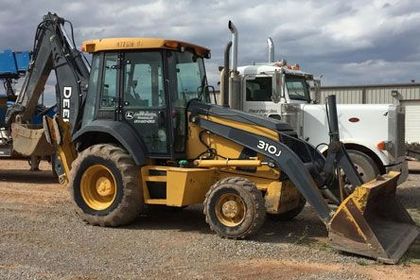Superior Rentals fusion machines: key benefits for pipeline welding
Wiki Article
All Concerning Oil Field Equipment and Pipeline Equipment: Key Insights and Necessary Info
Oil field equipment and pipeline systems play a pivotal duty in the oil and gas market. They are vital for the efficient removal and transport of hydrocarbons. Key parts, such as piercing rigs and storage containers, directly impact operational success. Innovations in technology guarantee to improve safety and performance. Understanding these aspects is crucial for any individual associated with or interested in this complicated field, as it sets the phase for deeper expedition of sector techniques.
Introduction of Oil Field Equipment
As the demand for oil proceeds to grow, recognizing the tools utilized in oil fields ends up being increasingly vital. Oil field equipment encompasses a wide variety of machinery and devices crucial for exploration, removal, and handling. Key components consist of piercing rigs, which are essential for reaching oil reservoirs, and production tools, such as separators and pumps, that promote the removal procedure. Superior Rentals near me. Additionally, storage tanks play a significant function in holding unrefined oil before transportation. Security tools, consisting of blowout preventers and pressure determines, assures functional safety and security and efficiency. Each piece of tools features cohesively to enhance production and keep efficient operations. Experience with this equipment is crucial for experts in the market to ensure successful operations and adherence to security criteriaTypes of Drilling Rigs and Their Applications
Drilling rigs function as the foundation of oil extraction procedures, with different types developed for details geological conditions and operational requirements. One of the most typical types include rotary boring rigs, which use a turning drill little bit to pass through the planet, and cable television tool rigs, understood for their percussion boring approach. For offshore operations, jack-up rigs and semi-submersible rigs supply security and assistance in aquatic environments. Furthermore, directional exploration rigs enable drivers to pierce at angles, reaching deposits that are not up and down available. Each gear kind has distinct advantages, enhancing effectiveness and safety based on the boring setting. Selecting the proper rig is important for taking full advantage of resource removal while lessening ecological effect and operational expenses.
Necessary Pipeline Equipment and Their Features
Pipeline infrastructure is important for the transportation of oil and gas from removal websites to refining centers and end-users. Different vital tools parts facilitate this process. Pipes themselves work as the primary avenues, made to hold up against high pressure and destructive compounds. Pump stations are important for maintaining flow by improving pressure along the pipeline. Shutoffs play an essential function in managing circulation and isolating areas for maintenance. In addition, installations and connectors assure safe joints between pipeline areas. Monitoring systems, consisting of circulation meters and stress sensors, are vital for finding leaks and enhancing circulation prices. Lastly, pigging equipment is used for upkeep and cleansing, safeguarding pipeline stability and efficiency. With each other, these elements form the foundation of a trusted pipeline system.Innovations and Technologies in Oil and Gas Equipment

Safety and Upkeep Practices in the Oil Industry
While the oil industry has actually made substantial strides in innovation and performance, the importance of durable safety and security and maintenance practices can not be overemphasized. Efficient security methods are important to shield workers and the setting, lessening the risk of crashes and spills. Normal inspections and maintenance of equipment aid recognize possible concerns prior to they rise, making sure functional stability. Educating programs for workers are essential, emphasizing the significance of security understanding and emergency situation response treatments. Additionally, adherence to industry policies and standards promotes a culture of security. Carrying out innovative surveillance modern technologies can better improve upkeep practices, permitting for real-time assessments of devices problems. Inevitably, prioritizing safety and maintenance is essential to the sustainability and success of the oil industry.Frequently Asked Concerns
What Are the Ecological Effects of Oil Field Equipment?
The ecological effects of oil field equipment consist of environment destruction, water contamination, and air pollution (Superior Oilfield Rentals). In addition, equipment malfunction can result in spills, adversely affecting wildlife and environments, highlighting the demand for rigorous guidelines and tracking
Exactly How Is Oil Field Equipment Transported to Remote Locations?
Carrying oil field equipment to remote areas typically includes specific cars, helicopters, or barges. Logistics business coordinate courses, making sure equipment arrives safely and efficiently, taking into consideration surface and availability to decrease hold-ups and make the most of performance.What Governing Standards Govern Oil Field Equipment?
Regulative requirements controling oil field equipment mostly include safety, environmental management, and functional efficiency guidelines. Agencies such as OSHA and EPA impose these policies to ensure risk-free practices and reduce environmental impact in oil extraction operations.What Skills Are Required to Run Oil Area Machinery?

Just How Do Oil Prices Impact Equipment Need and Usage?
Oil rates significantly influence devices need and usage. Higher prices normally cause raised exploration and production activities, driving demand for equipment. Alternatively, reduced rates might lead to reduced procedures and decreased requirement for devices.Report this wiki page